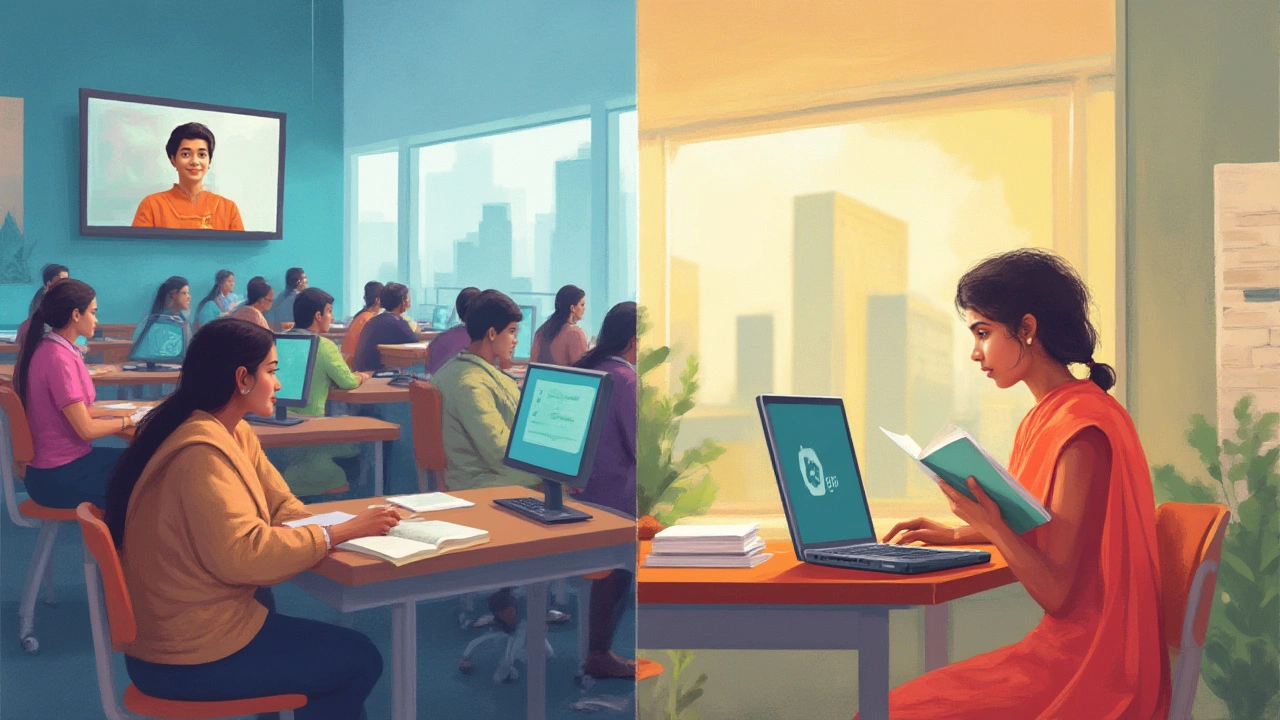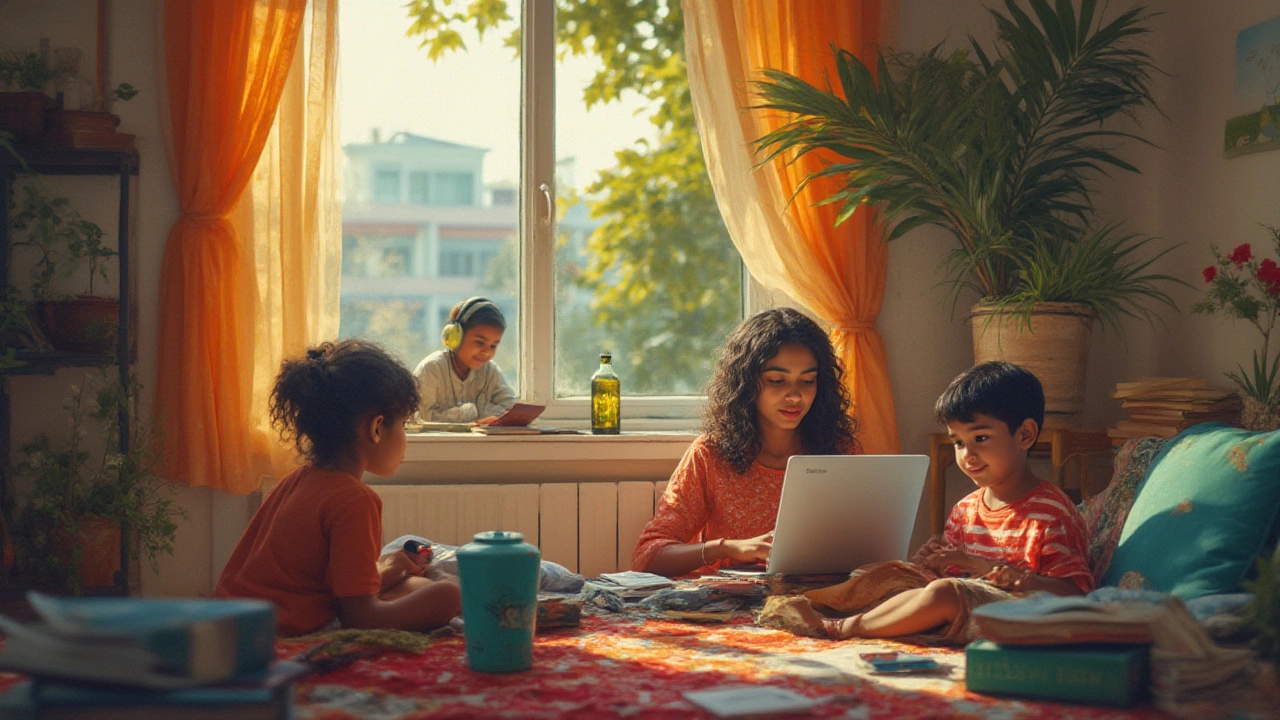Picture this: It’s nearly midnight, the house is finally quiet, and you’re wrangling with a tricky algebra lesson at your kitchen table. All you want is the freedom to study on your terms. But you keep hearing about “distance learning” and “online learning,” as if they’re twins in the world of education. Actually, there’s a world of difference between the two—and it can totally change your learning experience.
Understanding Distance Learning: More Than Just Snail Mail
Distance learning isn’t a new invention. In fact, it kicked off way before you could ever Google your homework. Back in the 1840s, Isaac Pitman, a British educator, started teaching shorthand by mailing assignments and collecting them back by post! So, distance learning’s roots are deep—think correspondence courses, televised lessons, maybe even materials sent on cassette tapes (yikes!). Australia’s School of the Air is a classic example. Since 1951, outback kids—living hundreds of kilometers from the nearest school—connected with teachers by radio. Today, it’s all about satellite and internet, but the spirit hasn’t changed: the key idea is, the student is not physically present in a traditional classroom.
Now, distance learning can use a mishmash of tools, from printed books to CDs, DVDs, or occasional online portals. But here’s the point: it isn’t always digital. Plenty of universities, like Indira Gandhi National Open University (IGNOU) in India, mix print, audio, and face-to-face meetups. Students might have deadlines to post assignments or attend a few in-person workshops, but there’s no daily virtual check-in. Instead, it’s designed to fit around jobs, family, and even patchy internet.
What’s the appeal? Flexibility is everything. Imagine someone in rural WA who works full-time on a farm. Distance learning lets them study toward a degree without ever needing daily WiFi or a webcam. It’s made for people juggling other life priorities or those in places where online infrastructure is patchy.
"Distance education has long provided access to learning for millions unable to attend in person. Its flexibility is its superpower,"said Dr. John Daniel, former vice-chancellor of the Open University.
But there are limitations. If your study packs arrive late, or if you crave interactive discussions, it can get lonely. And if you’re not organized? Distance study can swallow you whole. Deadlines still rule: late is late, whether you mail a handwritten project or upload a scanned PDF. Plus, feedback might trickle in slowly, unlike the real-time replies of a live chat or Zoom call.
Here’s a quick look at what makes distance learning tick:
| Feature | Distance Learning |
|---|---|
| Main delivery mode | Books, mail, CD/DVD, occasional digital tools |
| Interaction | Low—mainly self-driven, may include some phone/mail/email support |
| Flexibility | High—study on own schedule |
| Internet required? | Sometimes, but not always |
| Community | Usually isolated, little group work |
A tip for those considering distance learning: treat it like a job. Make a study calendar, set phone reminders, and—if you can—find an online group or study buddy, even if your classes don’t encourage it. Motivation is key when learning is 90% independent.

Online Learning: A Digital Classroom Without Walls
Online learning is the generation that grew up on WiFi and group video calls. Here, everything happens through the internet. The teacher, classmates, resources, quizzes, even discussion groups—all live online. Forget mailing assignments or waiting a week for feedback: it’s all instant. Think live lectures via Zoom, chat groups, forums, and digital assignments. The big names—Coursera, EdX, Khan Academy—define the space, but so do universities running online-only degrees or MBAs you can earn from your couch in Sydney.
What sets online learning apart isn’t just swapping physical classrooms for webcams. It’s the interactive tools: real-time polls, “raise a hand” features, teamwork in breakout rooms, and quick feedback. In my own house, my daughter Riya and her friends barely blink at jumping between Minecraft, Teams calls, and online classes—multitasking is second nature! But it’s not just for the young: working adults, parents, or career-changers are flocking to these courses. Why? They’re practical and modern—great for upskilling without putting your life on hold.
There’s a range: some courses are “synchronous,” which means live, scheduled lectures you join at set times (don’t turn up in pajamas unless you’re brave). Others go “asynchronous”—you watch videos, read, and hand in work whenever you want. Both have strong digital elements, like progress trackers, quizzes, and peer forums. Many courses gamify learning, handing out digital badges (my daughter collects them!) and keeping students hooked with social features.
What makes online learning work? One word: connection. There’s a vibe in knowing your classmates are real people—from someone in Brisbane to another in Bangalore, all logging in from their side of the planet. Discussion boards buzz with questions, jokes, even memes. Teachers are a click away. Quick feedback lets you course-correct fast, and lots of platforms have AI tutors, virtual labs, or live Q&A sessions for extra support.
But there are pitfalls. Reliable internet isn’t optional—if your WiFi is patchy, classes become impossible to follow. Some people miss in-person contact, feeling lost in online crowds. Plus, with so much on offer, choice can be paralyzing. Picking the right course and not overloading yourself is an art.
Here’s how online learning stacks up:
| Feature | Online Learning |
|---|---|
| Main delivery mode | Internet—streaming video, live chat, digital resources |
| Interaction | High—forums, video calls, chats, group projects |
| Flexibility | High, but depends on course (some have live sessions) |
| Internet required? | Always |
| Community | Strong peer-to-peer, plenty of group support |
Here’s a tip for thriving in online learning: Pick a good headset and set “study hours” so your family knows when to give you peace and quiet. Engage in forums and group chats, even if you’re shy—active participation means you won’t feel adrift.

Choosing What’s Right for You: Decision-Making Tips and Real-Life Scenarios
Deciding between distance and online learning isn’t about picking what sounds cooler. It’s about finding features that truly help you thrive. Ask yourself: Do you have strong, reliable internet? Are you keen on real-time interaction and quick feedback? Or are you somewhere remote, needing the freedom to pick up pen and paper instead of a laptop?
Let’s unpack some scenarios. Say you’re living on a sheep station outside Alice Springs, where 4G isn’t guaranteed. Here, classic distance learning shines, letting you study with physical materials and maybe a few face-to-face catchups. Or maybe you’re a working parent in a Sydney suburb (hi, that’s me), juggling kids’ soccer practice and your own career reboot. Online learning fits, letting you join live classes on your schedule, meet new people, and tap into support without leaving your couch.
Statistically, e-learning is exploding. According to a 2024 report by HolonIQ, global spending on online education will reach over $400 billion by 2026, with more than 1.5 billion students casually logging in for short courses or degrees. Australian Bureau of Statistics data shows online-learning enrollments surged 21% post-pandemic, with regional participation up by 40%—thanks to better broadband and a boom in flexible course options.
Here’s a list of questions to help you pick:
- Do you have fast, stable internet?
- Do you prefer structure, or making your own schedule?
- Are you happiest learning alone or do you crave group chats and discussion?
- Do you have work or family demands that mean attending live sessions is tricky?
- What kind of feedback helps you improve—slow and steady, or instant?
Quick tip: Read course guides closely. Some “distance” programs are actually hybrid—meaning, a little online, a little mail, maybe a weekend in-person intensive. Don’t assume one label means all your lessons will be on screen (or off!).
A lot of learners combine both. My friend Riya’s classmate, for example, uses distance methods for courses that need lots of reading and offline research, but jumps into online classes for practical workshops or presentations. There’s no rulebook—mix what works for your lifestyle!
One myth? That distance learning is “harder” or “worse” than online. Not true. Both are recognized by employers and universities—as long as they’re accredited, you’re sorted. Just make sure to check the fine print on graduation certificates and whether credits transfer if you plan to move or change course.
And don’t overlook support options: Many distance-learning providers have set up local support centers, phone hotlines, or once-a-semester meetups. Online learning, meanwhile, often gives you “learning coaches” or 24/7 chats. Don’t be afraid to reach out if you hit a wall—tutors live for this stuff.
To wrap, whether you’re choosing classic distance learning with printed notes or a fully digital online degree packed with Zoom calls, both paths lead to real qualifications and new skills. As long as you’re organized and proactive, you’ll find your place—and probably make a few friends who live half a world away (or next door). Personally, I never thought I’d hear a teacher say “unmute yourself, please!” more than “open your textbooks!” Maybe it’s a sign of the times, but either way, learning from a sunlit kitchen bench or outback verandah is here to stay.
